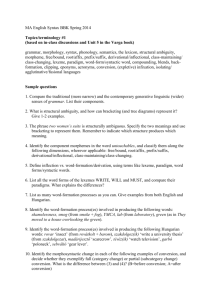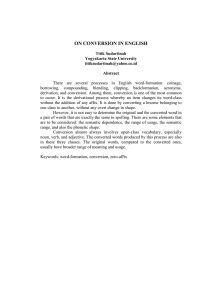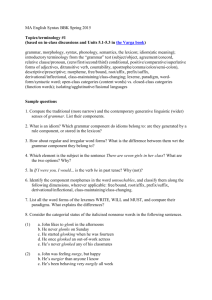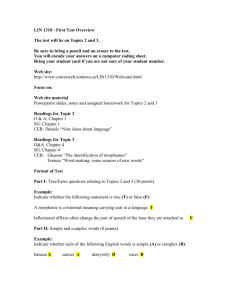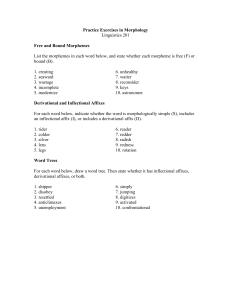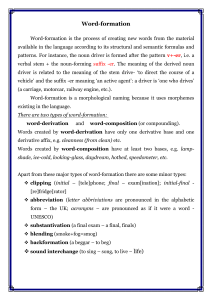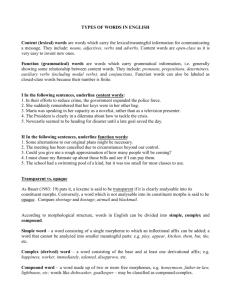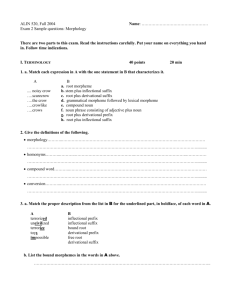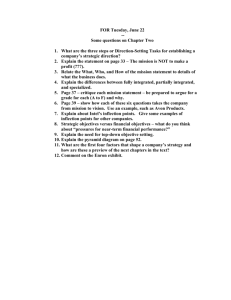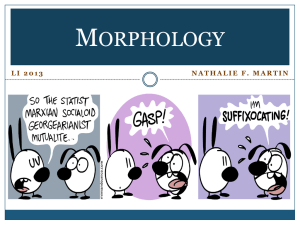MA English Syntax BBK Spring 2012
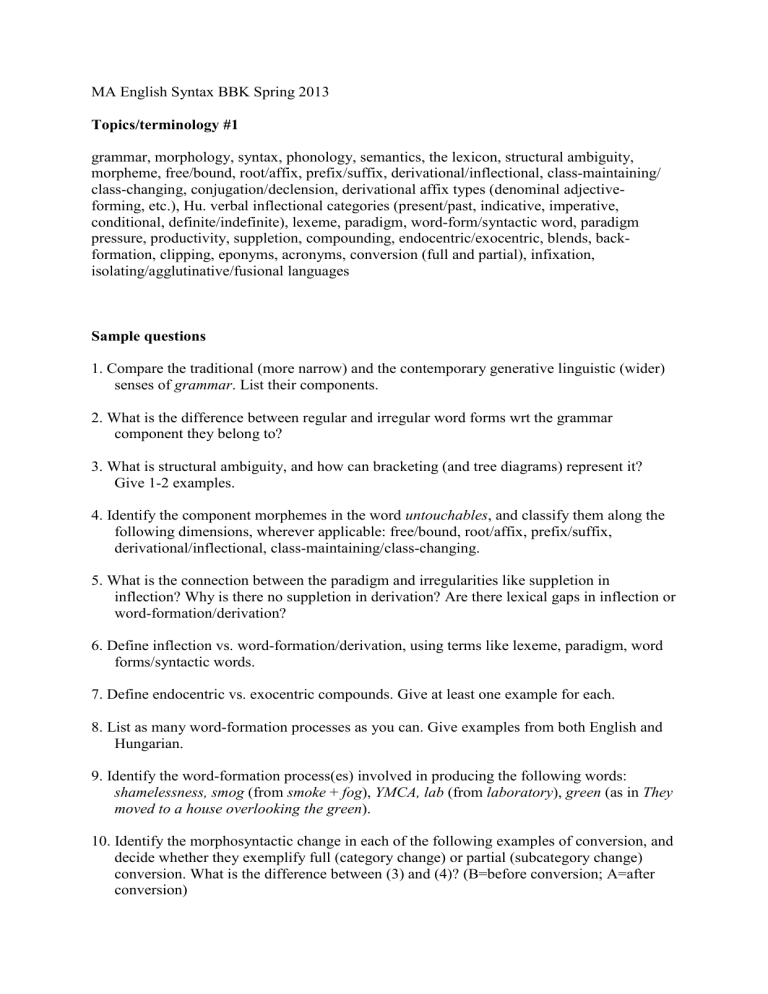
MA English Syntax BBK Spring 2013
Topics/terminology #1 grammar, morphology, syntax, phonology, semantics, the lexicon, structural ambiguity, morpheme, free/bound, root/affix, prefix/suffix, derivational/inflectional, class-maintaining/ class-changing, conjugation/declension, derivational affix types (denominal adjectiveforming, etc.), Hu. verbal inflectional categories (present/past, indicative, imperative, conditional, definite/indefinite), lexeme, paradigm, word-form/syntactic word, paradigm pressure, productivity, suppletion, compounding, endocentric/exocentric, blends, backformation, clipping, eponyms, acronyms, conversion (full and partial), infixation, isolating/agglutinative/fusional languages
Sample questions
1. Compare the traditional (more narrow) and the contemporary generative linguistic (wider) senses of grammar . List their components.
2. What is the difference between regular and irregular word forms wrt the grammar component they belong to?
3. What is structural ambiguity, and how can bracketing (and tree diagrams) represent it?
Give 1-2 examples.
4. Identify the component morphemes in the word untouchables , and classify them along the following dimensions, wherever applicable: free/bound, root/affix, prefix/suffix, derivational/inflectional, class-maintaining/class-changing.
5. What is the connection between the paradigm and irregularities like suppletion in inflection? Why is there no suppletion in derivation? Are there lexical gaps in inflection or word-formation/derivation?
6. Define inflection vs. word-formation/derivation, using terms like lexeme, paradigm, word forms/syntactic words.
7. Define endocentric vs. exocentric compounds. Give at least one example for each.
8. List as many word-formation processes as you can. Give examples from both English and
Hungarian.
9. Identify the word-formation process(es) involved in producing the following words: shamelessness, smog (from smoke + fog ), YMCA, lab (from laboratory ), green (as in They moved to a house overlooking the green ).
10. Identify the morphosyntactic change in each of the following examples of conversion, and decide whether they exemplify full (category change) or partial (subcategory change) conversion. What is the difference between (3) and (4)? (B=before conversion; A=after conversion)
(1) B: Who’s afraid of the Big Bad Wolf?
A: He wolfed down his lunch.
(2) B: Hamlet was written by William Shakespeare.
A: You are a new Shakespeare.
(3) B: Jimmie, don't even worry about that.
A: Don’t Jimmie me!
(4) B: This photocopier was produced by Xerox.
A: He xeroxed 3 pages.
11. Compare English and Hungarian wrt the language types they belong to. Explain briefly.
12. What morphological/morphosyntactic categories are there in Hungarian which are nonexistent in English? Give at least 2 examples and explain them briefly.
